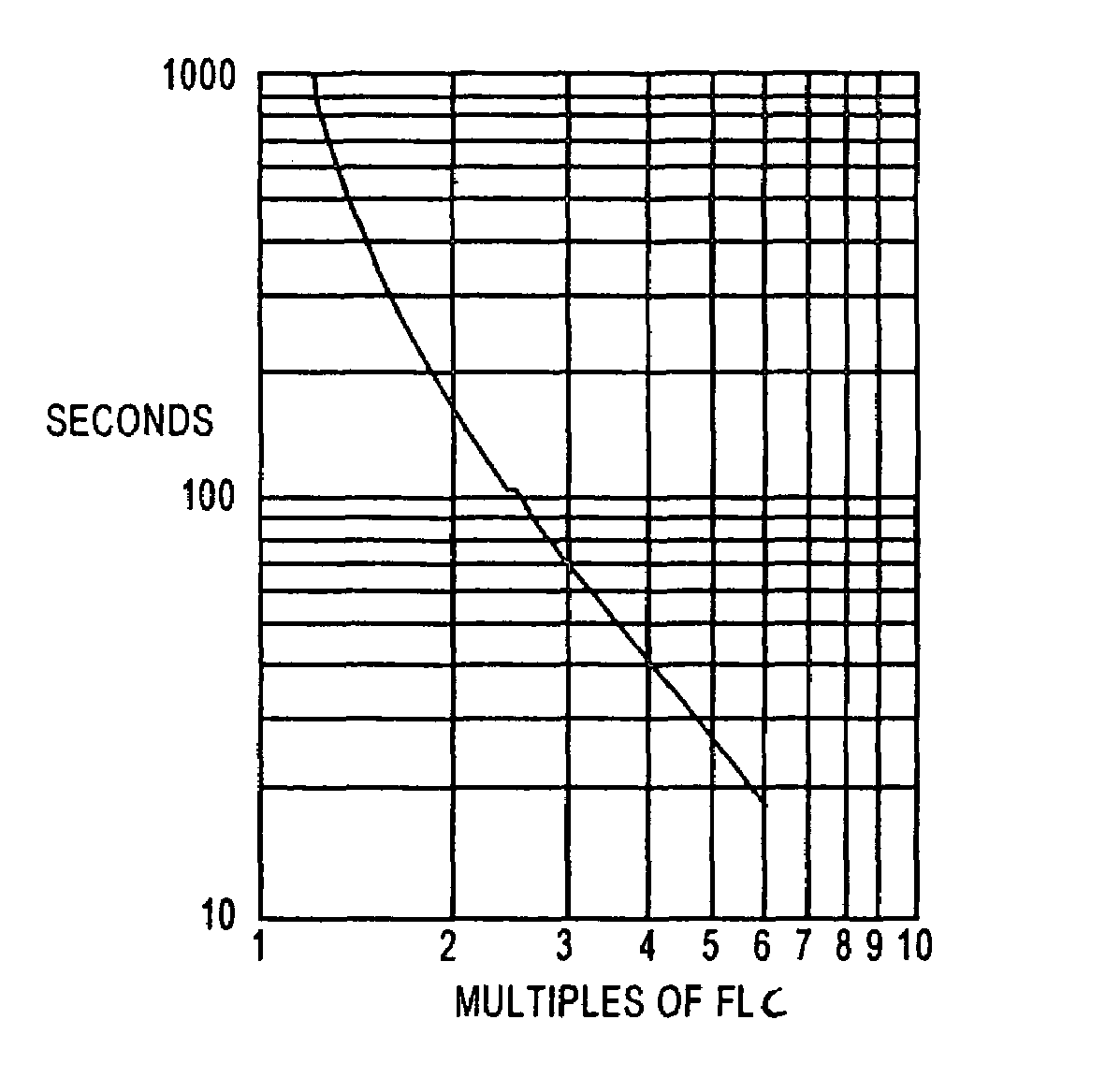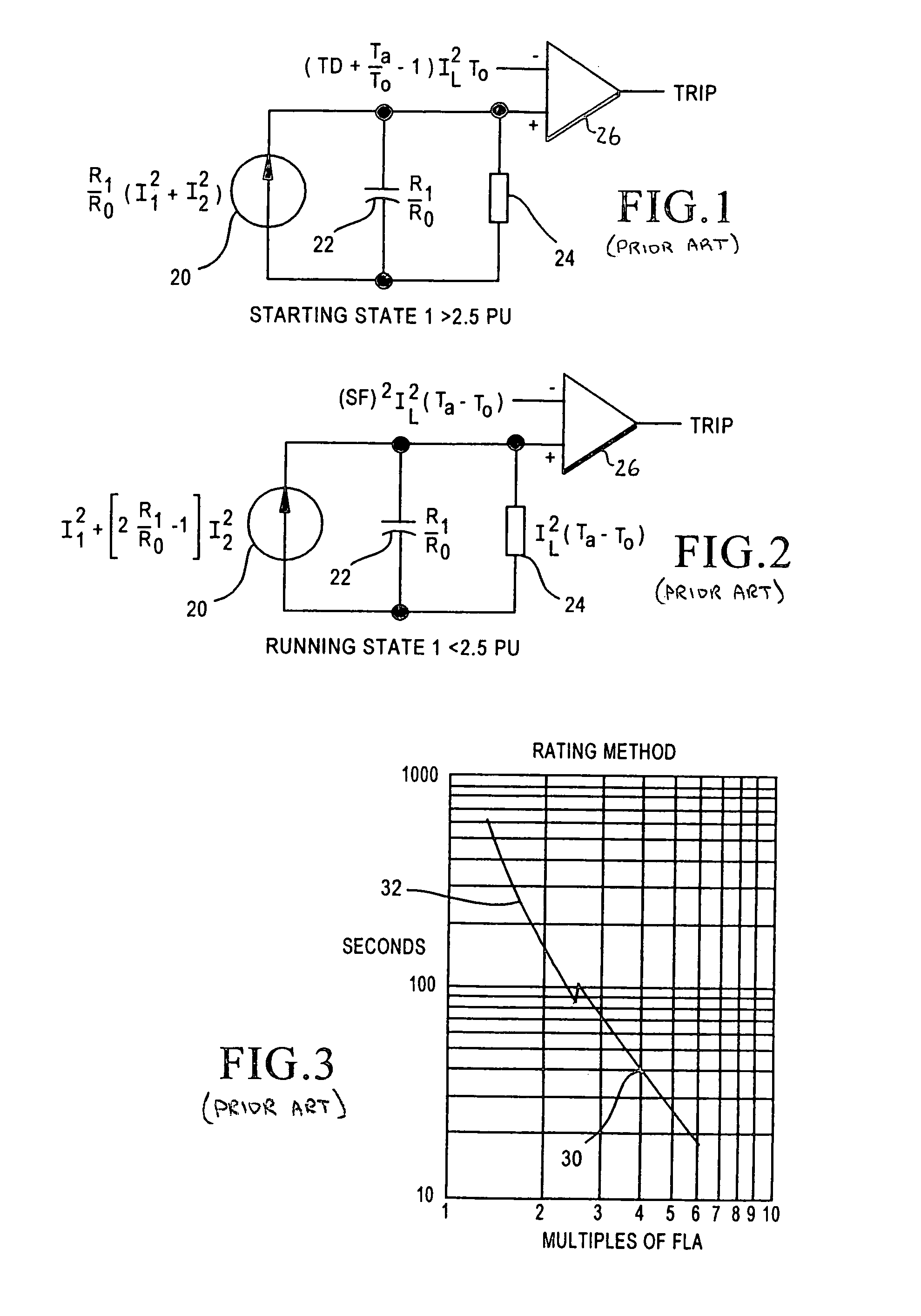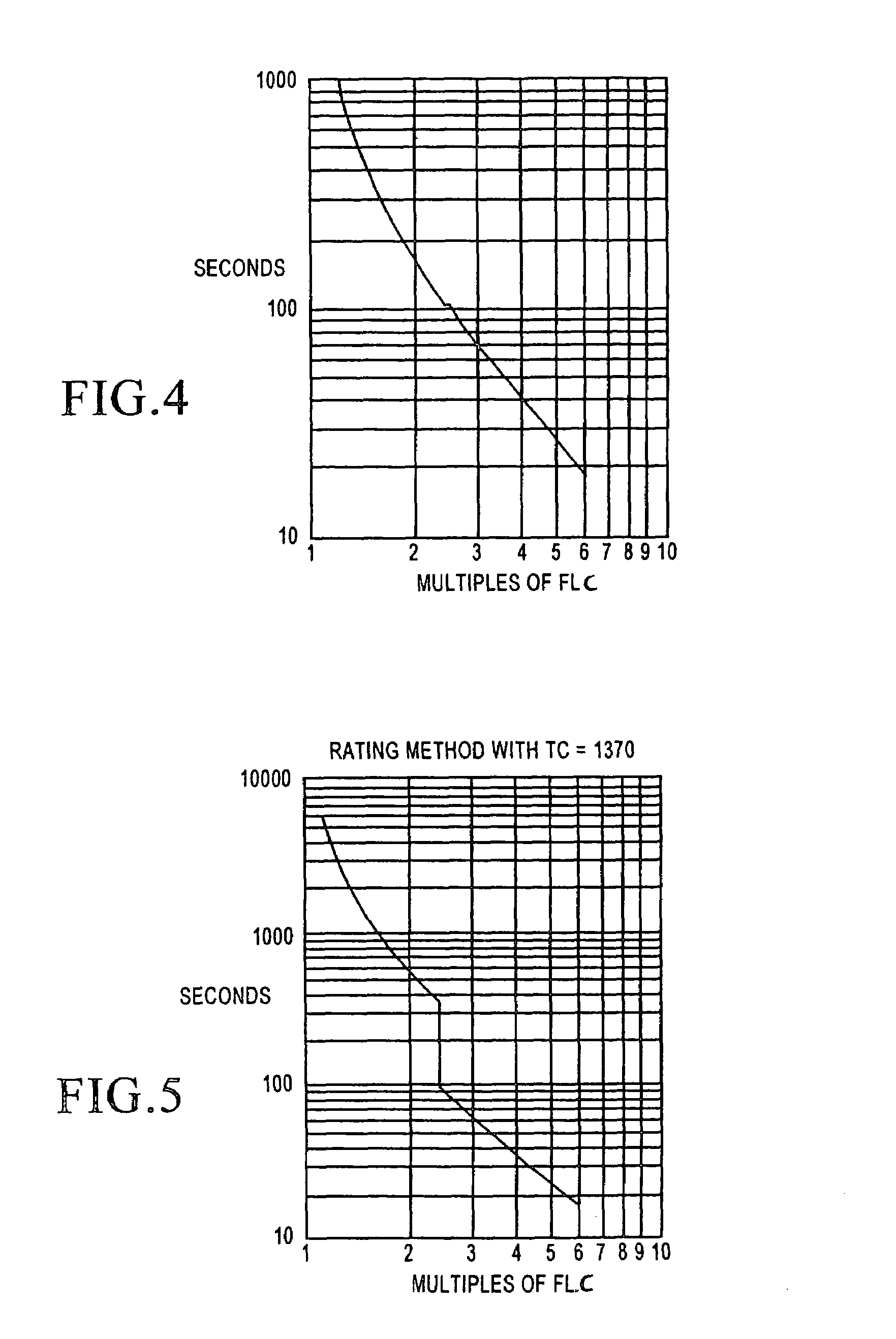Rotor thermal model for use in motor protection
a thermal model and motor protection technology, applied in emergency protective circuit arrangements, emergency protective arrangements responsive to undesired changes, electrical appliances, etc., can solve the problems of less than optimum protection performance, less than optimum protection for the motor, and true temperature overload appropria
- Summary
- Abstract
- Description
- Claims
- Application Information
AI Technical Summary
Problems solved by technology
Method used
Image
Examples
Embodiment Construction
[0013]As indicated above, the use of start and run condition thermal models to provide protection for motors based on the actual heating and cooling of the motor during operation is known. The electrical analog representations of the start and run conditions are briefly discussed above and discussed in some detail in the '784 patent, and are shown in FIGS. 1 and 2. Again, the start condition of the motor is when the measured current to the motor (I) is greater than 2.5 times the full load current, while the run condition of the motor is defined as when the measured current is less than 2.5 times the full load current. The full load current (“FLC”) value is supplied by the manufacturer.
[0014]The heating effect of the motor in FIGS. 1 and 2 is represented at 20, the thermal capacity at 22 and the cooling effect at 24 (zero for the start condition). The combined result is compared against a threshold value by comparator 26 and a trip decision is made.
[0015]Each of those thermal model h...
PUM
 Login to View More
Login to View More Abstract
Description
Claims
Application Information
 Login to View More
Login to View More - R&D
- Intellectual Property
- Life Sciences
- Materials
- Tech Scout
- Unparalleled Data Quality
- Higher Quality Content
- 60% Fewer Hallucinations
Browse by: Latest US Patents, China's latest patents, Technical Efficacy Thesaurus, Application Domain, Technology Topic, Popular Technical Reports.
© 2025 PatSnap. All rights reserved.Legal|Privacy policy|Modern Slavery Act Transparency Statement|Sitemap|About US| Contact US: help@patsnap.com



